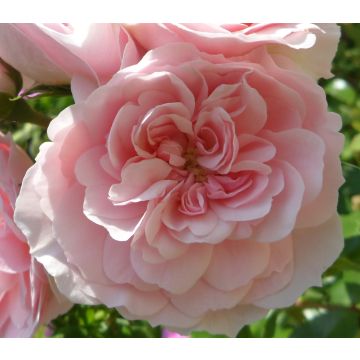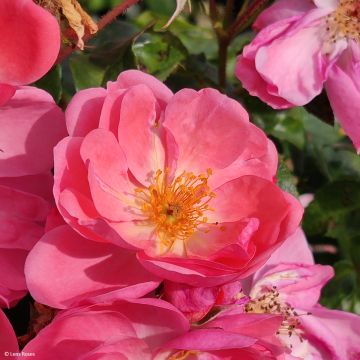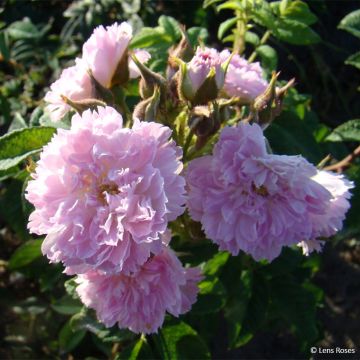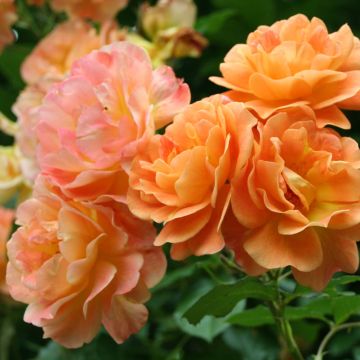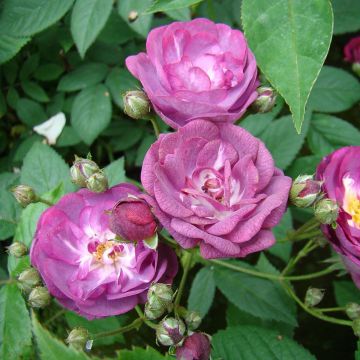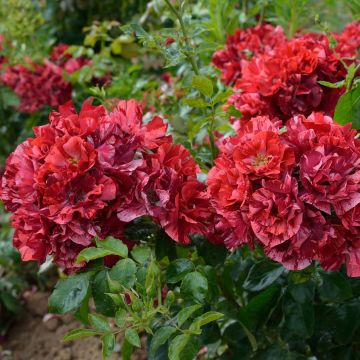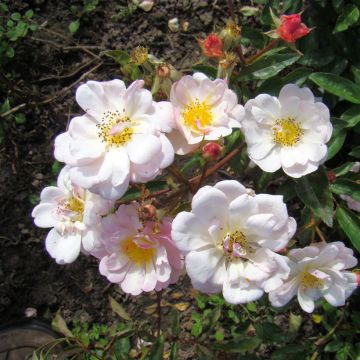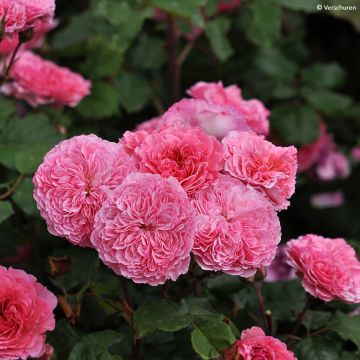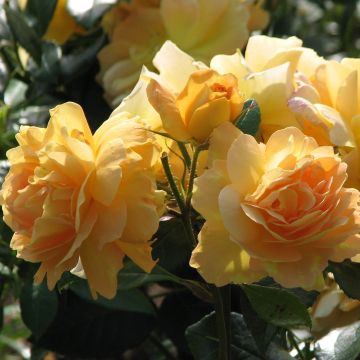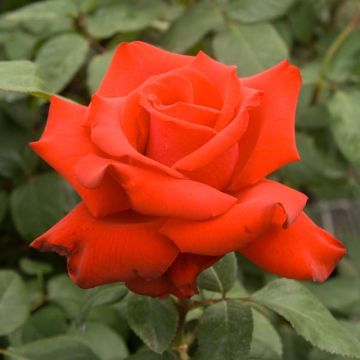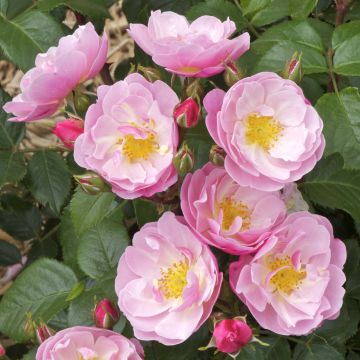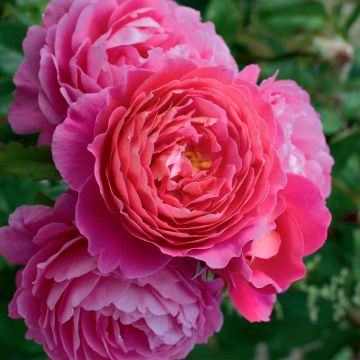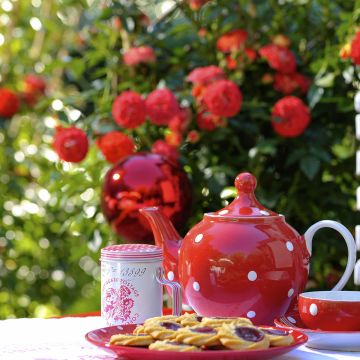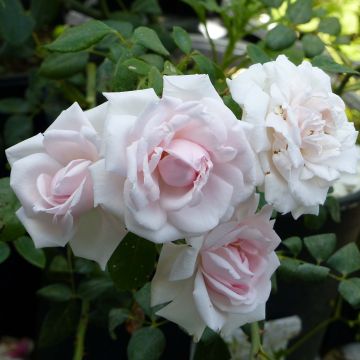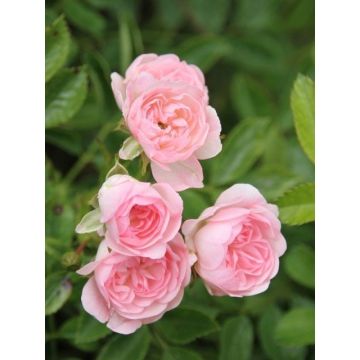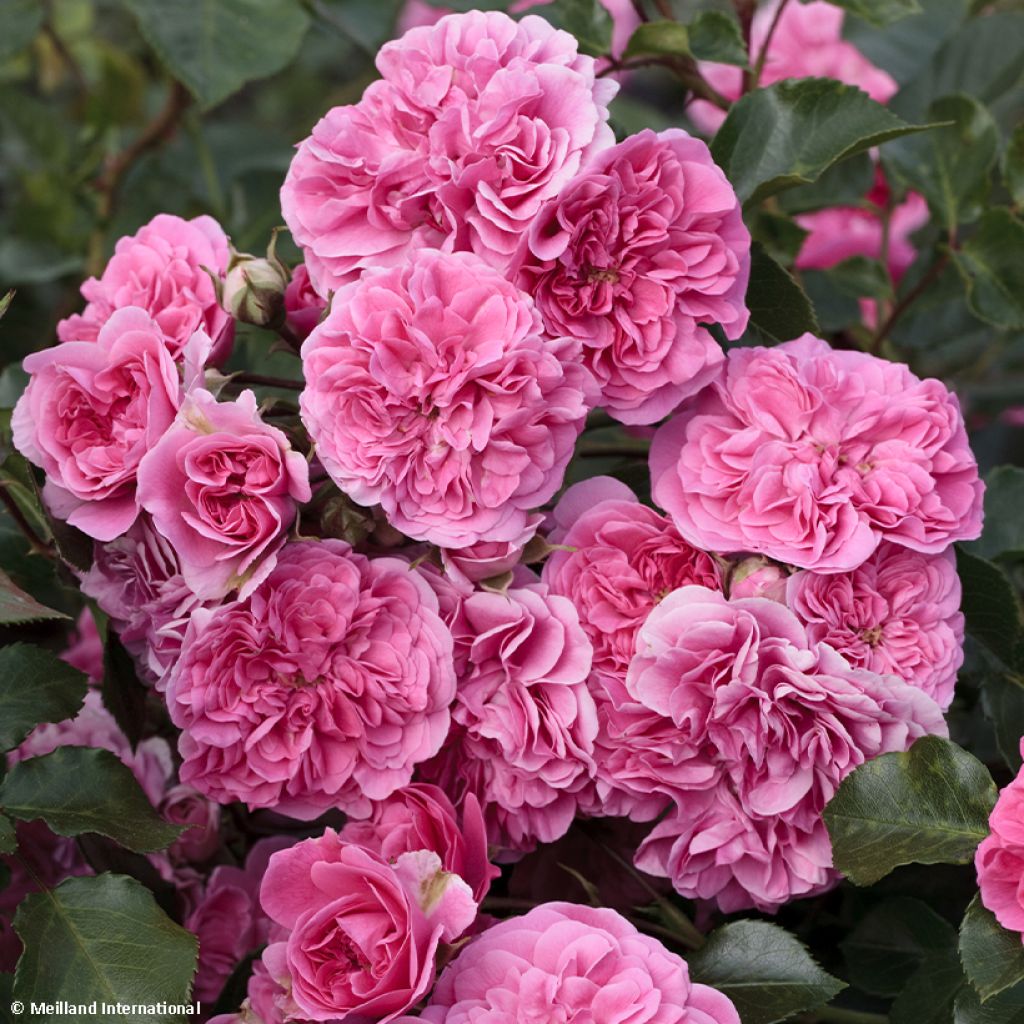

Rosier paysager couvre-sol Les Quatre Saisons 'Meifafio'
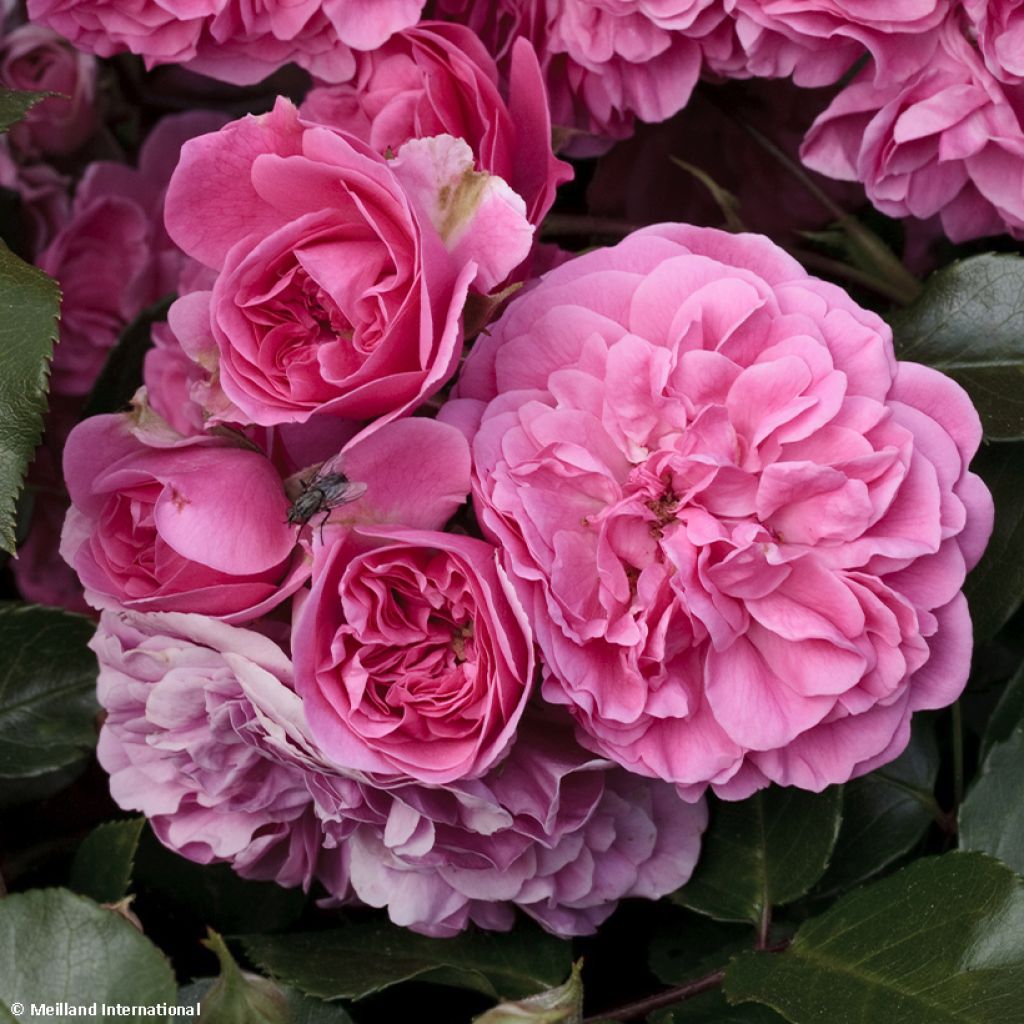

Rosier paysager couvre-sol Les Quatre Saisons 'Meifafio'
Rosa x polyantha Les Quatre Saisons 'Meifafio' - Landscape Rose
Rosa x polyantha Les Quatre Saisons 'Meifafio'
Rose
This item cannot be shipped to the selected country
Delivery charge from €5.90
Delivery charge from €5.90
Delivery charge from €5.90
Delivery charge from €5.90
More information
Schedule delivery date,
and select date in basket
This plant carries a 24 months recovery warranty
More information
We guarantee the quality of our plants for a full growing cycle, and will replace at our expense any plant that fails to recover under normal climatic and planting conditions.
From €5.90 for pickup delivery and €6.90 for home delivery
Express home delivery from €8.90.
From €5.90 for pickup delivery and €6.90 for home delivery
Express home delivery from €8.90.
From €5.90 for pickup delivery and €6.90 for home delivery
Express home delivery from €8.90.
From €5.90 for pickup delivery and €6.90 for home delivery
Express home delivery from €8.90.

Does this plant fit my garden?
Set up your Plantfit profile →
Description
Rose Les Quatre Saisons 'Meifafio' has vibrant pink flowering, lively, glorious, nostalgic, and always renewed from spring to autumn. It is a landscape rose with great vigour,which is very floriferous, and highly resistant to diseases. This intrepid bush forms a wide cushion where hundreds of charming little romantic roses, in pompoms, succeed each other in successive waves, in a joyful range of pink. Forming a slightly blurry mass, often cascading, this rose will make a big impact in flower beds, over walls, as a border, or as groundcover without requiring much care.
The flowers of Rosa x polyantha Les Quatre Saisons 'Meifafio', gathered in terminal clusters, come from the polyantha rose, an ancient hybrid derived from Rosa multiflora and Rosa chinensis. This creation by Meilland, dating back to 2003, has won several awards in international competitions: the Gold Medal in Baden-Baden (Germany) in 2003, the Silver Medal in Paris Bagatelle in 2004, the La Haye Certificate (Netherlands) in 2006. It also received the prestigious German ADR label in 2003, guaranteeing excellent natural resistance to rose diseases. It is a small vigorous shrub, with a bushy and spreading habit, much wider than it is tall, carried by flexible stems. It will reach a height of about 70 cm (28in) with a spread of 1.20 m (4ft) in a few years, sometimes more depending on the growing conditions. The flowers, with a diameter of 7-8 cm (3in), are composed of 100 petals arranged in quarters, and they are particularly resistant to bad weather despite their doubling. Their color is a superb gradient from intense pink to fresh pink, from the center to the periphery. They bloom in clusters of 3 to 10 units. The plant blooms in successive waves between May-June and October, as long as there is no frost. In case of dry summer, the flowering will stop and resume only when the rains return. This variety develops foliage of a fairly light green, slightly shiny, composed of small leaflets. Deciduous, it falls in autumn and reappears in spring. Its stems bear thorns.
The Rose Les Quatre Saisons adapts to all soils that are not too dry and all climates, which allows it to be welcomed without reservation in many regions. It has slightly trailing branches that look wonderful in rockeries, on slopes, or cascading from a wall. It can also be planted in groups of three specimens, arranged in an isolated triangle on a lawn, in a small garden. Planted en masse, it will also border pathways and highlight shrub beds. It integrates perfectly with light or opulent perennial beds. It can also be integrated into a small flowering hedge composed of Japanese quinces, other ground coverroses, or Meillandecor, for example. Perennial geraniums, catmints, as well as perennial salvias, make excellent companions. Left to grow freely, this fantastic Rose Les Quatre Saisons will form a flowery dome, wildly romantic, in front of a shrub bed composed of buddleias, Kolkwitzia, mock oranges, Japanese cherry trees, or dwarf lilacs, for example.
Report an error about the product description
Plant habit
Flowering
Foliage
Botanical data
Rosa
x polyantha
Les Quatre Saisons 'Meifafio'
Rosaceae
Rose
Cultivar or hybrid
Other Landscape shrub Roses
Planting and care
Roses prefer a sunny location (at least 4 to 5 hours of sun per day), but sheltered from the scorching midday rays and strong winds. They appreciate loose, permeable, and rich soils. They prefer a slightly acidic soil, but will adapt to any garden as long as the soil is well-worked and sufficiently rich. To plant your rose, prepare your soil to a depth of 25 cm by crumbling the soil and adding a bottom amendment such as bonemeal. Position your plant, removed from its pot, covering the top of the root ball with 3 cm (1in) of soil, backfill, and water generously to remove air pockets. In dry weather, regular watering for a few weeks is necessary to facilitate root development. Also, remember to provide your rose with special rose fertiliser that stimulates flowering.
Roses are often spotted or unsightly at the end of summer, but this is not a problem for their development. These spots are not harmful to the rose; it is a natural phenomenon.
Planting period
Intended location
Care
-
, onOrder confirmed
Reply from on Promesse de fleurs
Roses by purpose
Haven't found what you were looking for?
Hardiness is the lowest winter temperature a plant can endure without suffering serious damage or even dying. However, hardiness is affected by location (a sheltered area, such as a patio), protection (winter cover) and soil type (hardiness is improved by well-drained soil).

Photo Sharing Terms & Conditions
In order to encourage gardeners to interact and share their experiences, Promesse de fleurs offers various media enabling content to be uploaded onto its Site - in particular via the ‘Photo sharing’ module.
The User agrees to refrain from:
- Posting any content that is illegal, prejudicial, insulting, racist, inciteful to hatred, revisionist, contrary to public decency, that infringes on privacy or on the privacy rights of third parties, in particular the publicity rights of persons and goods, intellectual property rights, or the right to privacy.
- Submitting content on behalf of a third party;
- Impersonate the identity of a third party and/or publish any personal information about a third party;
In general, the User undertakes to refrain from any unethical behaviour.
All Content (in particular text, comments, files, images, photos, videos, creative works, etc.), which may be subject to property or intellectual property rights, image or other private rights, shall remain the property of the User, subject to the limited rights granted by the terms of the licence granted by Promesse de fleurs as stated below. Users are at liberty to publish or not to publish such Content on the Site, notably via the ‘Photo Sharing’ facility, and accept that this Content shall be made public and freely accessible, notably on the Internet.
Users further acknowledge, undertake to have ,and guarantee that they hold all necessary rights and permissions to publish such material on the Site, in particular with regard to the legislation in force pertaining to any privacy, property, intellectual property, image, or contractual rights, or rights of any other nature. By publishing such Content on the Site, Users acknowledge accepting full liability as publishers of the Content within the meaning of the law, and grant Promesse de fleurs, free of charge, an inclusive, worldwide licence for the said Content for the entire duration of its publication, including all reproduction, representation, up/downloading, displaying, performing, transmission, and storage rights.
Users also grant permission for their name to be linked to the Content and accept that this link may not always be made available.
By engaging in posting material, Users consent to their Content becoming automatically accessible on the Internet, in particular on other sites and/or blogs and/or web pages of the Promesse de fleurs site, including in particular social pages and the Promesse de fleurs catalogue.
Users may secure the removal of entrusted content free of charge by issuing a simple request via our contact form.
The flowering period indicated on our website applies to countries and regions located in USDA zone 8 (France, the United Kingdom, Ireland, the Netherlands, etc.)
It will vary according to where you live:
- In zones 9 to 10 (Italy, Spain, Greece, etc.), flowering will occur about 2 to 4 weeks earlier.
- In zones 6 to 7 (Germany, Poland, Slovenia, and lower mountainous regions), flowering will be delayed by 2 to 3 weeks.
- In zone 5 (Central Europe, Scandinavia), blooming will be delayed by 3 to 5 weeks.
In temperate climates, pruning of spring-flowering shrubs (forsythia, spireas, etc.) should be done just after flowering.
Pruning of summer-flowering shrubs (Indian Lilac, Perovskia, etc.) can be done in winter or spring.
In cold regions as well as with frost-sensitive plants, avoid pruning too early when severe frosts may still occur.
The planting period indicated on our website applies to countries and regions located in USDA zone 8 (France, United Kingdom, Ireland, Netherlands).
It will vary according to where you live:
- In Mediterranean zones (Marseille, Madrid, Milan, etc.), autumn and winter are the best planting periods.
- In continental zones (Strasbourg, Munich, Vienna, etc.), delay planting by 2 to 3 weeks in spring and bring it forward by 2 to 4 weeks in autumn.
- In mountainous regions (the Alps, Pyrenees, Carpathians, etc.), it is best to plant in late spring (May-June) or late summer (August-September).
The harvesting period indicated on our website applies to countries and regions in USDA zone 8 (France, England, Ireland, the Netherlands).
In colder areas (Scandinavia, Poland, Austria...) fruit and vegetable harvests are likely to be delayed by 3-4 weeks.
In warmer areas (Italy, Spain, Greece, etc.), harvesting will probably take place earlier, depending on weather conditions.
The sowing periods indicated on our website apply to countries and regions within USDA Zone 8 (France, UK, Ireland, Netherlands).
In colder areas (Scandinavia, Poland, Austria...), delay any outdoor sowing by 3-4 weeks, or sow under glass.
In warmer climes (Italy, Spain, Greece, etc.), bring outdoor sowing forward by a few weeks.


































